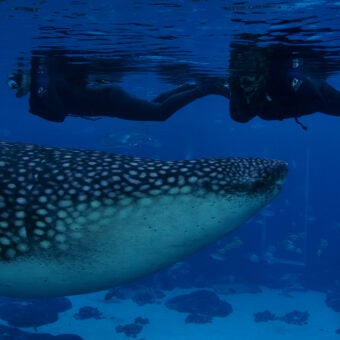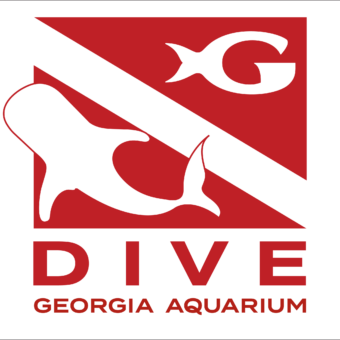-
Size
Up to 10 feet (3.1 m) -
Diet
Benthic crustaceans, mollusks and bottom-dwelling fish -
Range
Indo-West Pacific -
Habitat
Soft bottoms close to shore or coral reefs
Physical Characteristics
- Can reach 10 feet (3.1 m) in length and 500 lbs. (227 kg).
- Bottlenose wedgefish have a distinctive shape that resembles a cross between a shark and a ray. However, it is actually a member of the ray family.
- The front of its body is flattened and wide, with a bottle-shaped snout and flattened pectoral fins. The rest of its body and the large dorsal fins create a shark-like appearance.
- Juvenile coloration is grayish-brown with white spots and a black spot on the pectoral fin. There are three white spots above each black spot.
- Adults are considerably darker in color, appearing almost black from above with white spots and a black spot on the pectoral fin. There are three white spots above each black spot.
Animal Fun Fact
Adult can reach a length of approximately 10 feet (3 m) in length.
Diet / Feeding
- Feeds primarily on benthic crustaceans, mollusks and bottom-dwelling fish.
Range / Habitat
- Occurs in the subtropical waters of the Indo-West Pacific (including the Red Sea and the Persian Gulf) from the East African coast to Taiwan, the Philippines and Australia.
- Usually is encountered at depths up to 197 feet (60 m) on soft bottoms close to shore or coral reefs.
Reproduction & Growth
- Ovoviviparous, meaning it produces eggs that hatch within the mother’s body, and the young are born live.
Conservation Status
- “Critically Endangered” on the IUCN Red List
Additional Information
- Commonly caught by gillnet, trawl and longline fisheries.
- This species is unfortunately a common victim of the shark fin trade.





